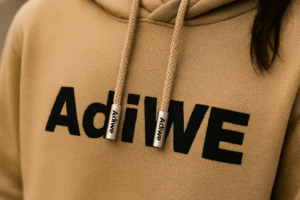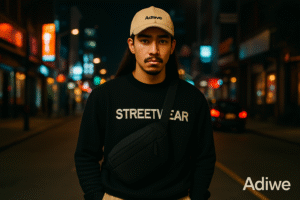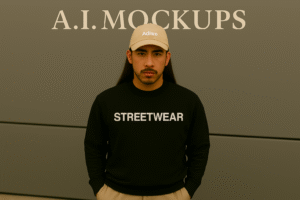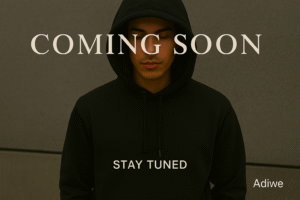Searching for a factory that truly gets streetwear? Finding suppliers who understand the style, quality, and complexity can be difficult. Discover reliable ways to connect with the right partners.
Find streetwear manufacturers through online B2B platforms (like Alibaba), industry tradeshows, targeted Google searches (using keywords like "streetwear manufacturer China"), social media (Instagram), and referrals from other brands.
Finding a potential manufacturer is the first step. But you need one that understands the unique demands of streetwear – the fabrics, the fits, the culture. Let's explore how to build a strong relationship once you connect.
How do I partner with a clothing manufacturer?
Found a factory but unsure how to build a real partnership? Treating them just as suppliers leads to misunderstandings and poor results. Learn to foster a collaborative relationship.
Partner by communicating openly, providing clear tech packs, respecting their expertise, paying on time, giving constructive feedback, and viewing them as part of your team for long-term success.
Building a strong partnership is vital, especially in streetwear where details matter. It's more than just sending orders. It's about collaboration. My client, Fifty Fifty, needed a partner who could handle their complex hoodie designs, not just a factory punching out basics. This requires trust and clear communication from both sides. Think of it like a team working towards the same goal: creating amazing products. Providing detailed tech packs is non-negotiable; it's the blueprint we need at Adiwe to bring your vision to life accurately. Regular check-ins, maybe even video calls, help clarify things quickly. We also appreciate when brands listen to our input – sometimes we might suggest a fabric or construction tweak that improves the final garment or makes production smoother. Paying invoices promptly builds goodwill. Visiting the factory, if possible, solidifies the relationship. A good partnership means we understand your brand's needs deeply, and you understand the production process. It leads to better quality, fewer errors, and a smoother experience for everyone involved. This mutual respect and understanding is the foundation for long-term success.
| Partnership Element | Action | Benefit |
|---|---|---|
| Communication | Open, frequent, clear updates | Reduces errors, builds trust |
| Tech Packs | Detailed, accurate specifications | Ensures correct product development |
| Respect | Value expertise, understand limitations | Fosters cooperation, better problem-solving |
| Feedback | Constructive criticism on samples | Improves quality, aligns expectations |
| Timely Payments | Adhere to agreed payment terms | Maintains good relationship, ensures priority |
| Long-Term View | Focus on ongoing collaboration | Leads to better understanding and efficiency |
How do I create a streetwear brand name?
Struggling to find a name that fits your streetwear brand? A weak name fails to connect with your audience or stand out. Choose a name that resonates and represents your style.
Create a streetwear name by brainstorming words related to your brand's vibe, target audience, or unique selling point. Keep it memorable, easy to say, check for available domains/social handles, and ensure it's legally usable (trademark).
Your brand name is crucial in streetwear; it needs to capture the attitude and aesthetic you're going for. It's often the first impression people have. Think about what your brand stands for. Is it about rebellion, luxury, community, art, a specific location? Start listing words associated with these concepts. Consider your target audience – what language or references do they connect with? Some brands use founder names, others use abstract words, some use plays on words, or terms related to street culture. Look at Fifty Fifty – their name is memorable and has a certain balance. Keep it relatively short and easy to pronounce and remember. Crucially, check if the name is available. Search for domain names (website address), social media handles (Instagram, TikTok), and most importantly, conduct a trademark search to avoid legal issues later. Don't rush this step. Say potential names out loud, get feedback from your target audience if possible. It should feel authentic to your brand vision. We at Adiwe work with brands that have put thought into their identity, and it shows.
Brainstorming Approaches:
- Keywords: List words related to street culture, your niche, location, values.
- Abstract: Invented words or unique combinations.
- Founder Name: Using your own name or a variation.
- Figurative Language: Metaphors, irony, wordplay related to your theme.
- Location-Based: Referencing a city, neighborhood, or area code.
Verification Checklist:
- Is it memorable and easy to spell/say?
- Does it reflect your brand identity/vibe?
- Is the .com domain available?
- Are the key social media handles available?
- Is it legally available (check trademark databases)?
Is streetwear profitable?
Wondering if launching a streetwear brand is a good business move? Fear of low profits or market saturation can hold you back. Understand the potential and challenges.
Yes, streetwear can be very profitable, but it requires a strong brand identity, unique designs, quality products, smart marketing, and careful financial management. High competition means differentiation is key.
Streetwear is a huge market, and yes, many brands are very profitable. However, it's also incredibly competitive. Simply putting a logo on a blank hoodie isn't usually enough anymore. Success often comes down to building a genuine brand that resonates with a specific community or niche. Profitability depends on several factors. Product Margin: You need a healthy difference between your production cost (what you pay us at Adiwe) and your selling price. This requires balancing quality (which costs more) with a price your target market will pay. Brands like Fifty Fifty focus on unique design and quality, allowing them to command a better price. Brand Strength: Strong branding, storytelling, and community engagement drive demand and customer loyalty, allowing for better margins and repeat business. Marketing: You need effective ways to reach your audience without breaking the bank. Social media is huge, but requires consistent effort and creativity. Operations: Managing inventory, shipping, and costs efficiently is crucial. Over-ordering or high return rates can eat into profits quickly. While the potential is high, especially with global reach online, it's not easy money. You need passion, a unique point of view, quality production (which we provide), and solid business sense.
| Factor | Impact on Profitability | How to Address It |
|---|---|---|
| Product Quality | Higher quality can justify higher prices but costs more. | Find a manufacturer offering good value; balance cost vs. perceived value. |
| Brand Uniqueness | Strong brands command loyalty and higher price points. | Develop a clear identity, unique designs, compelling story. |
| Pricing Strategy | Price too low = no profit; too high = no sales. | Research competitors, understand your costs, know your customer's willingness to pay. |
| Marketing Costs | Can be significant; need good ROI. | Focus on organic reach (social media, community), targeted ads, collaborations. |
| Operational Costs | Inventory, shipping, returns impact bottom line. | Optimize logistics, manage stock levels carefully, ensure good QC to reduce returns. |
| Competition | Saturated market makes it harder to stand out. | Find a niche, offer unique value, build a strong community connection. |
Conclusion
Finding the right streetwear manufacturer involves research and outreach. Building partnerships, crafting a strong brand name, and understanding the market's profitability are crucial for success.




